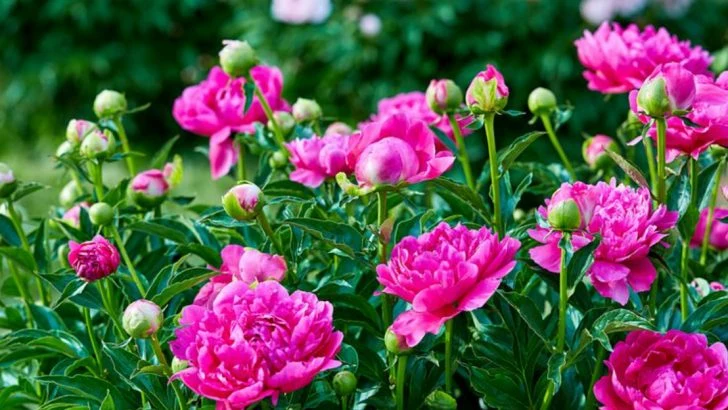Some plants like drama. These just get the job done—and look good doing it. If you’ve ever wrestled a rootball the size of a pumpkin, you know: dividing perennials isn’t always a peaceful pastime. But guess what? Not every plant needs a split to shine. These 17 all-stars don’t just survive without dividing—they thrive. They grow with quiet confidence, bloom on cue, and stay put like they’ve signed a lifelong lease. Think hellebores holding court in the shade year after year. Or baptisia growing stronger every season—no spade in sight. And Russian sage? It couldn’t care less about your shovel. This is low-maintenance glory at its finest. Plant once. Walk away. Then enjoy seasons of blooms with zero digging, dragging, or sweating through your Saturday. Ready for a garden that handles itself? These perennials are your people.
Peony
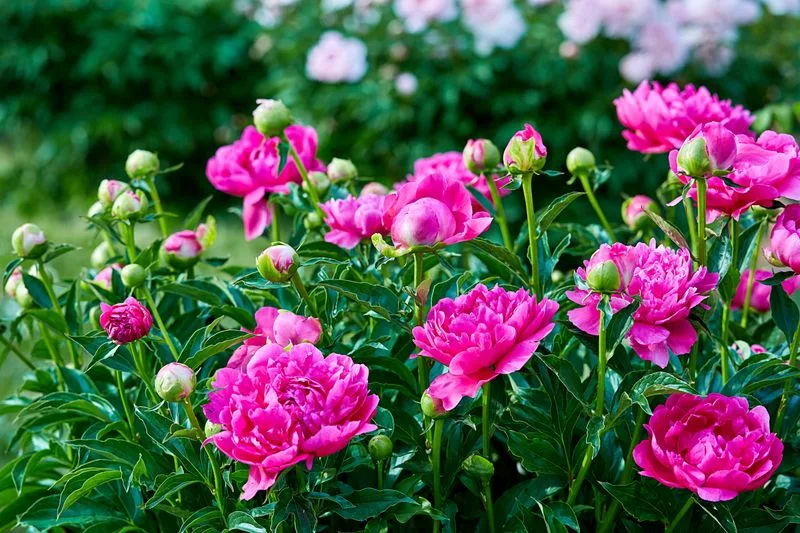
Known for its extravagant blooms and sweet fragrance, the peony is a garden classic. Peonies can thrive for decades without needing division, providing bursts of color every spring. Their large, lush flowers make them a favorite among florists and gardeners alike.
With a history dating back to China, peonies symbolize prosperity and honor. Whether planted as a focal point or in a mixed border, they captivate with their presence. Peonies are relatively pest-resistant, making them even more appealing to gardeners seeking low-maintenance options.
Hellebore
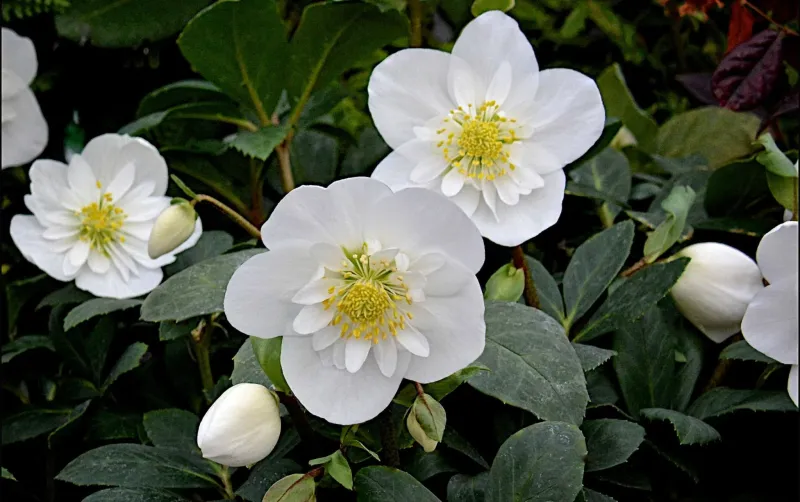
Hellebores, often called the “winter rose,” bloom when most other flowers are dormant. Their resilience and early spring blooms are a gardener’s delight. Hellebores require little care and do not need to be divided, thriving in shaded corners of the garden.
Their nodding flowers add a touch of elegance to winter and early spring landscapes. Hellebores have a long lifespan, with some species living up to 25 years. A symbol of serenity, they are perfect for those seeking year-round interest in their gardens.
Lungwort
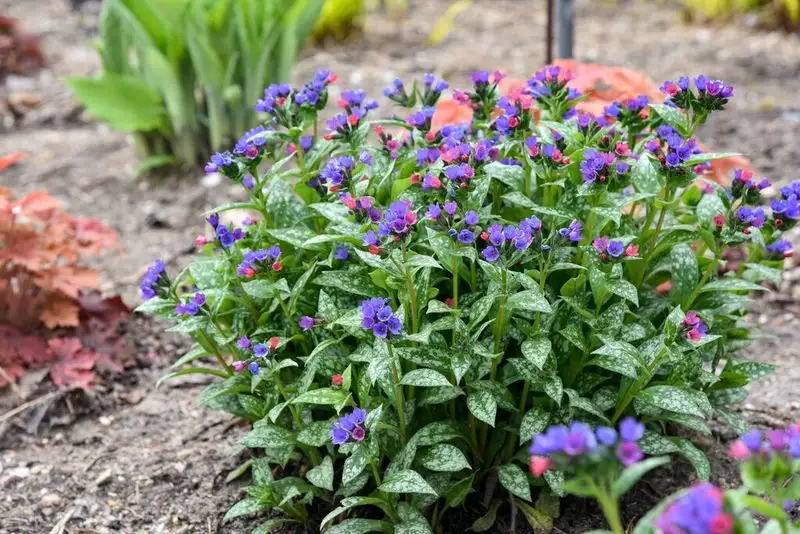
Lungwort’s unique spotted foliage and delicate blooms make it a standout in any garden. This perennial thrives in shaded areas, bringing color where usually there is little. Its flowers change color as they age, providing dynamic visual interest.
Lungwort is a no-fuss plant, requiring minimal upkeep and no division. Historically, it was used for medicinal purposes, believed to treat lung ailments, thus its name. Today, it charms gardeners with its resilience and decorative appeal, proving that beauty often lies in the unexpected.
Bergenia
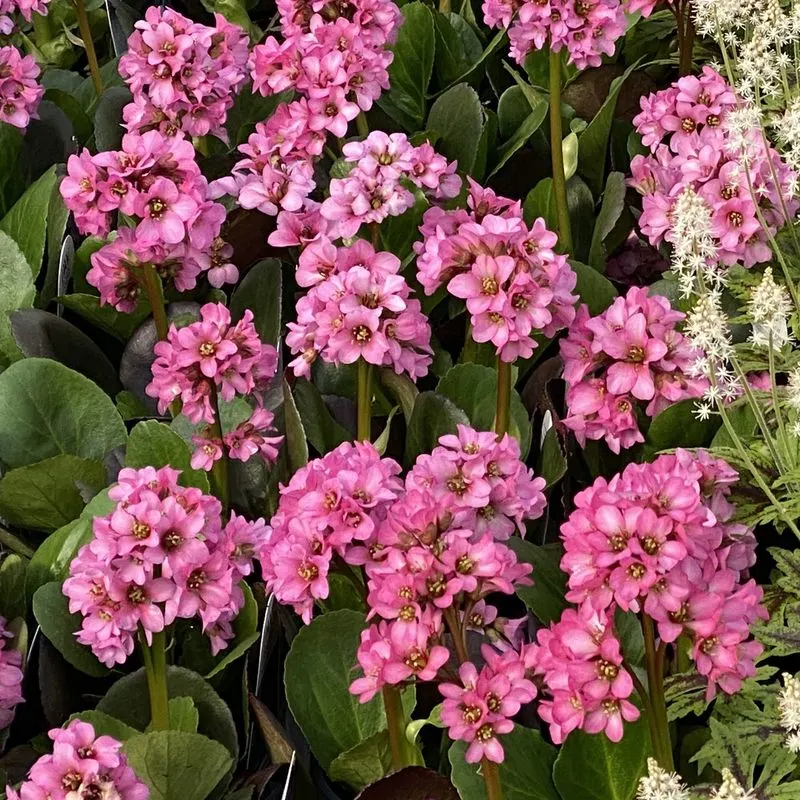
Bergenia, also known as “pigsqueak” due to the sound its leaves make, is a robust perennial that demands little attention. Its large, leathery leaves and vibrant pink flowers make it an attractive choice for gardeners seeking year-round interest.
Bergenia thrives in a range of conditions and does not require division, adapting well to different garden settings. Its resilience and distinctive foliage make it a popular choice for borders and rock gardens. This plant’s ability to withstand neglect makes it ideal for busy gardeners.
Heuchera
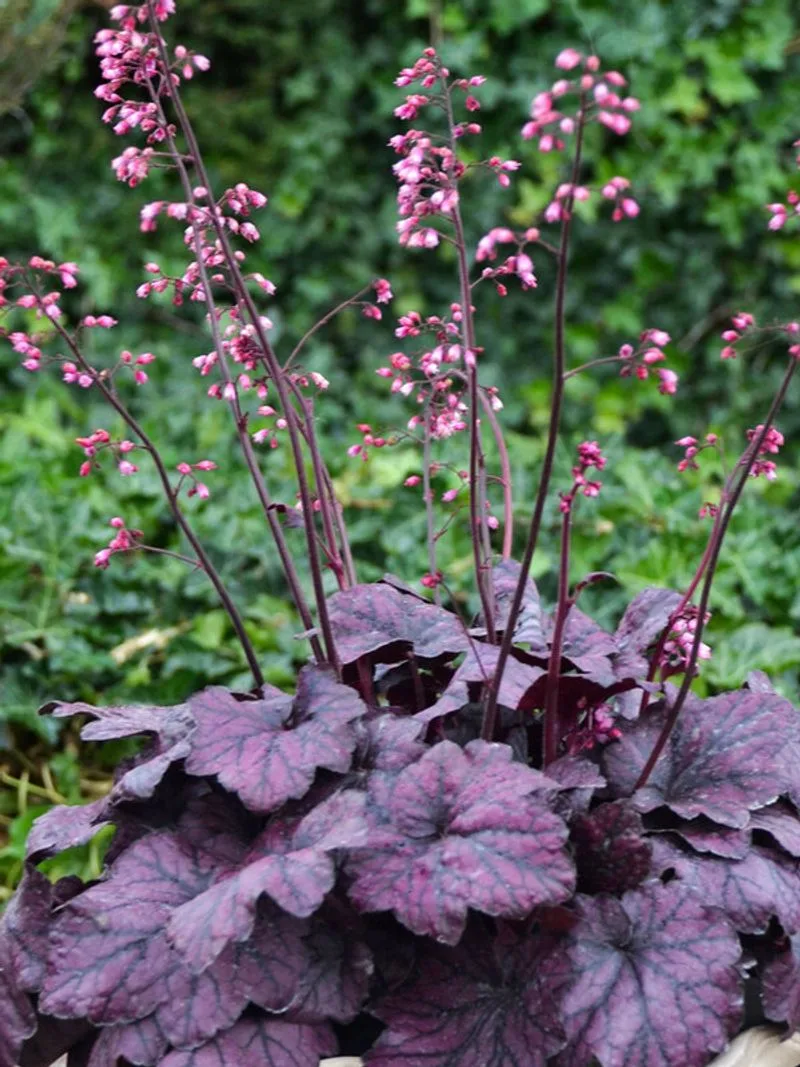
Heuchera, or coral bells, captivate with their colorful foliage and delicate flowers. These perennials are perfect for adding texture and color to shaded parts of the garden. Their leaves range from deep burgundy to lime green, offering year-round interest.
Heuchera requires minimal maintenance and does not need dividing, making it a gardener’s favorite. Their versatility and striking appearance make them a common choice for borders and container gardens. With a variety of species available, they offer endless possibilities for creative gardening.
Hosta
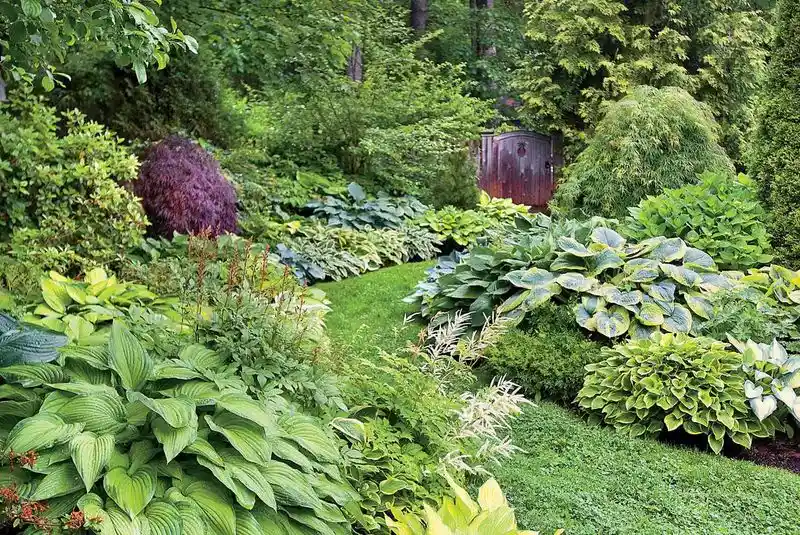
Renowned for their lush foliage, Hostas are a staple in shaded gardens. Their broad leaves create a lush, tropical feel, and they’re known for being highly resilient. Hostas do not require frequent dividing, making them an easy-care perennial.
They thrive in a variety of soils and are loved for their ability to fill large spaces with green texture. Despite their susceptibility to slugs, their robust nature and varied leaf colors make them a popular choice for gardeners looking to add depth to their plantings.
Geranium
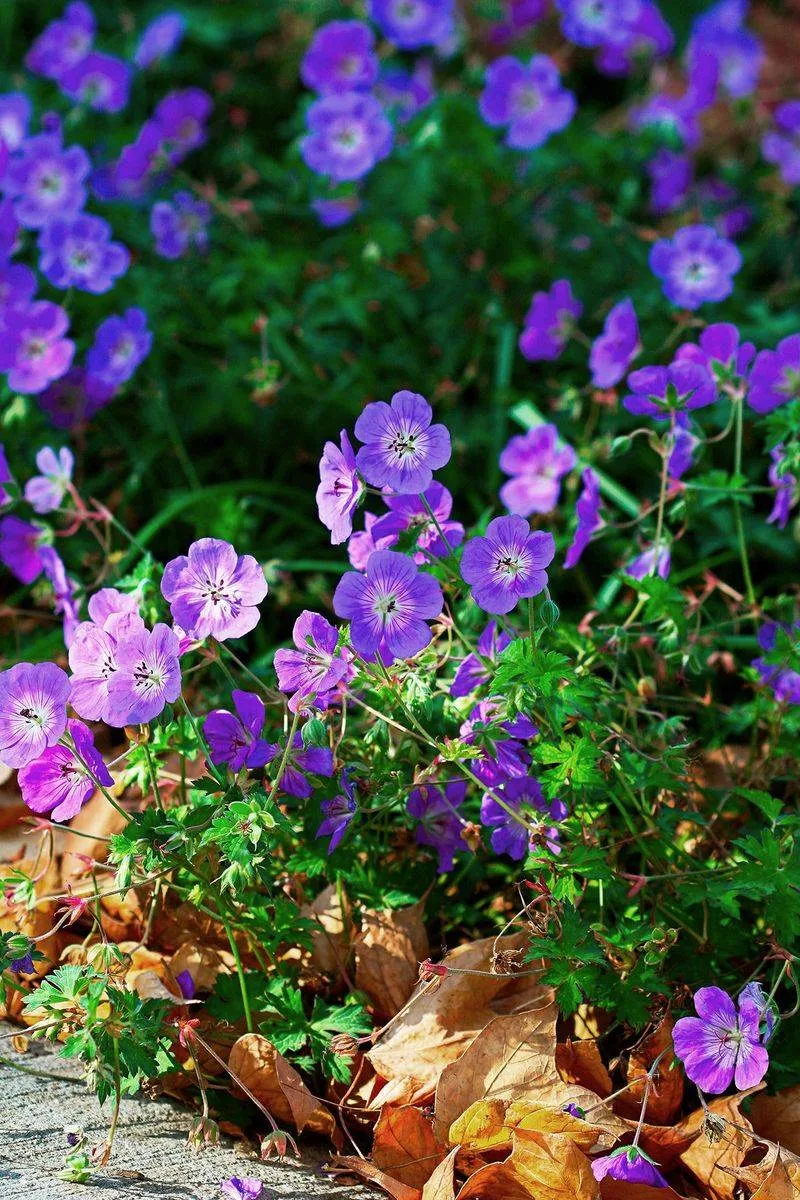
Hardy geraniums, not to be confused with their tender relatives, are reliable perennials known for their long blooming period. These plants offer beautiful mounds of foliage and an abundance of flowers without needing division.
Their adaptability to various conditions makes them a favorite among gardeners. Geraniums attract pollinators and add a pop of color to borders and containers. Their ease of care and vibrant blooms make them a must-have for those seeking low-maintenance beauty in their outdoor spaces.
Sedum
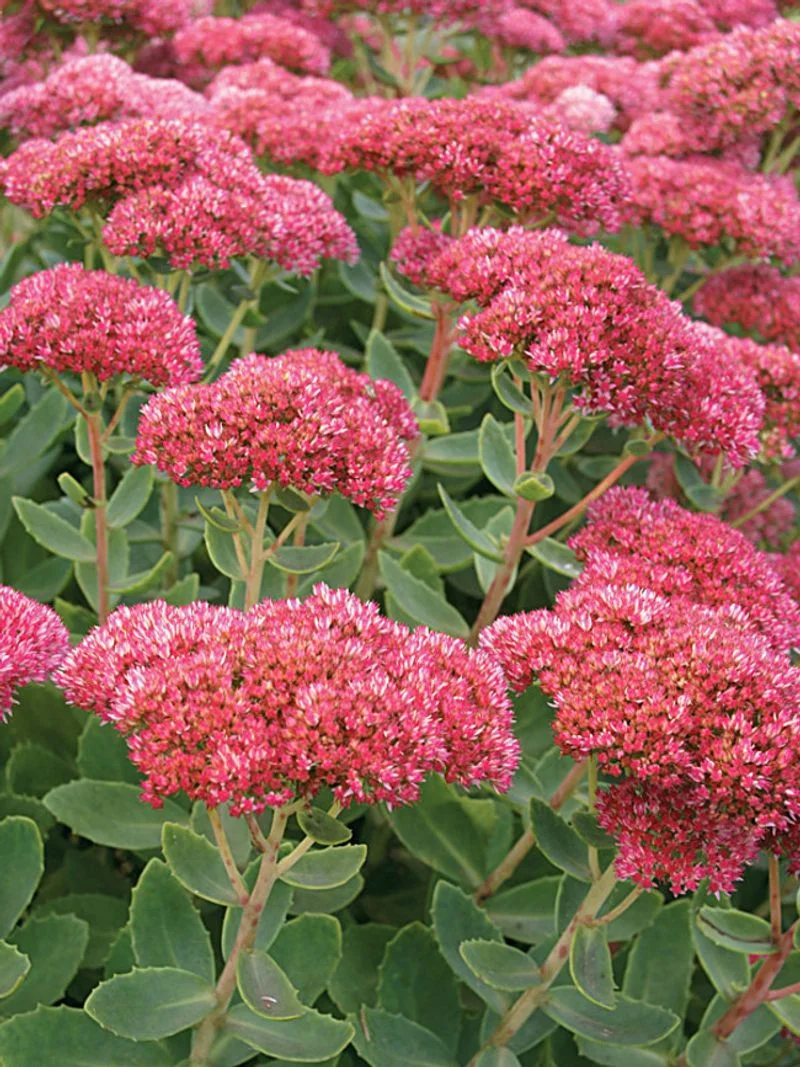
Sedums, often referred to as stonecrops, are enduring perennials that thrive in sunny, well-drained locations. Their succulent leaves and star-shaped flowers provide texture and interest throughout the growing season.
These plants are incredibly low-maintenance and require no division, making them ideal for rock gardens and borders. Sedum’s ability to withstand drought and poor soil conditions contributes to its popularity. Their varied colors and forms make them a versatile choice for gardeners looking to create a tapestry of foliage and flowers.
Japanese Anemone
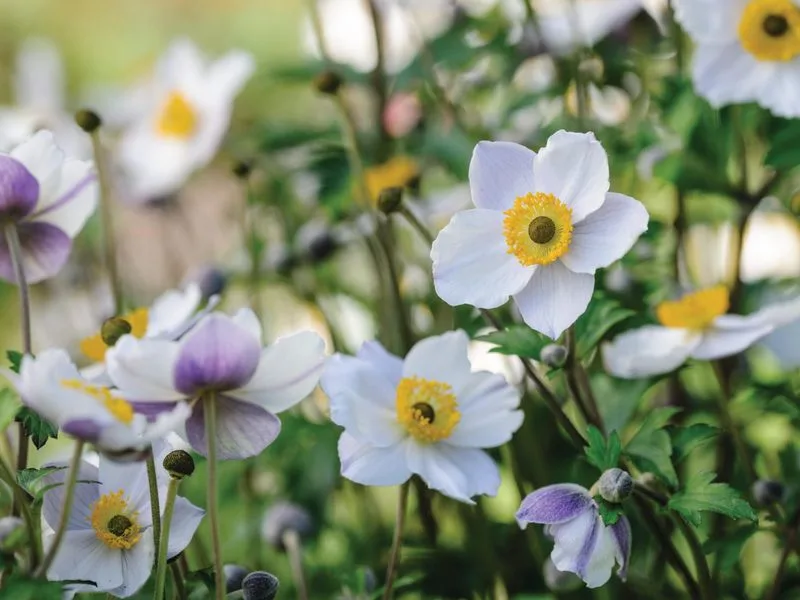
Japanese Anemones grace gardens with their elegant late summer and fall blooms. Known for their tall, graceful stems and delicate flowers, they add movement and height to borders. These perennials do not need dividing, thriving in the same spot year after year.
Their ability to adapt to different light conditions makes them a versatile choice for varied garden settings. Japanese Anemones symbolize anticipation and are cherished for their ability to prolong the garden’s color into the cooler months, bridging the gap between summer and autumn blooms.
Yucca
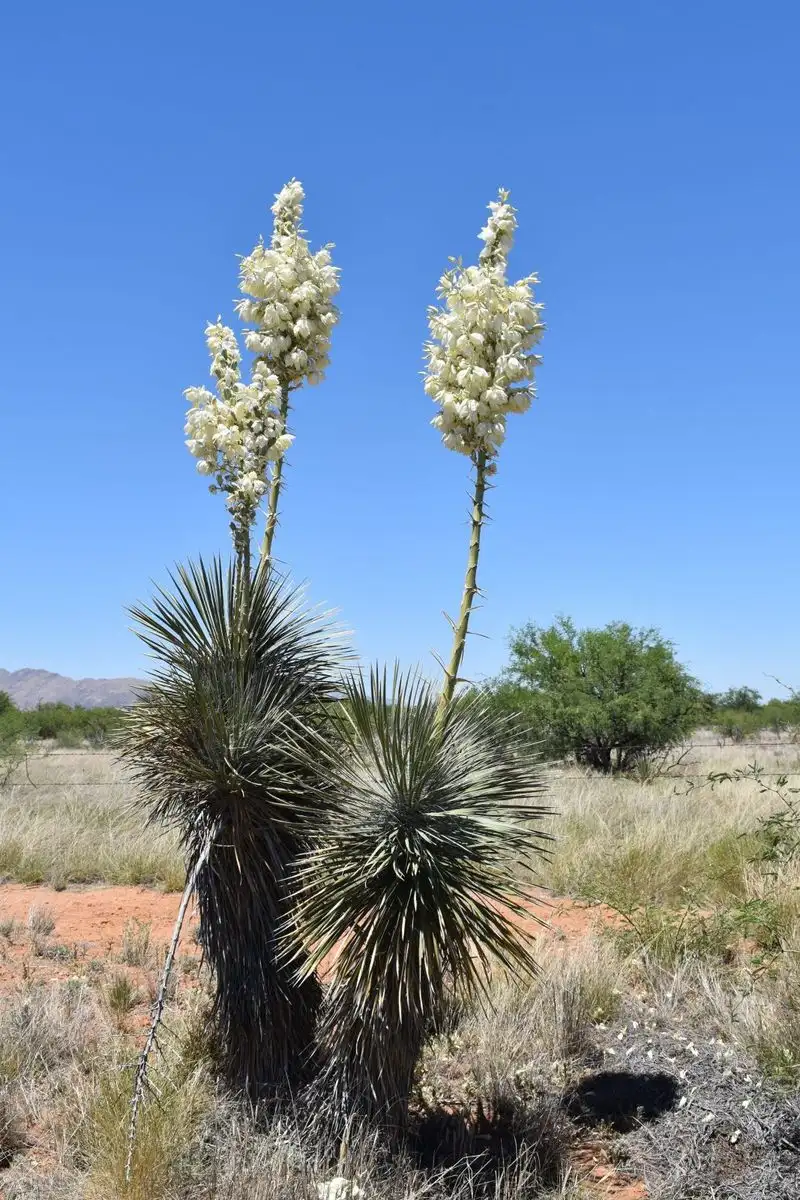
Yucca plants, with their dramatic foliage and towering flower spikes, bring a touch of the desert to gardens. They are incredibly hardy and require no division, flourishing in well-drained soil and full sun.
Yucca’s architectural form adds interest and structure to landscapes, making them a favored choice for modern garden designs. Their resilience and drought tolerance make them an excellent option for low-water gardens. With their striking appearance, yuccas offer a bold statement for gardeners looking to create focal points.
Daylily
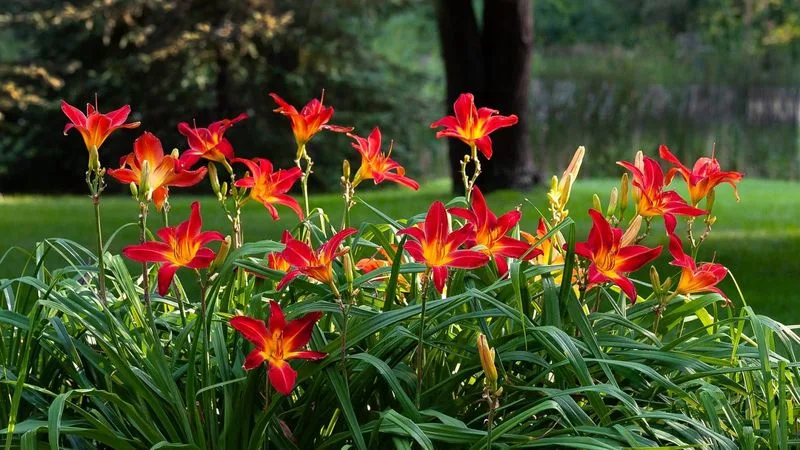
Daylilies are beloved for their vibrant blooms and easy care. Each flower may only last a day, but the plant produces new ones continuously throughout the season. Daylilies thrive in a variety of conditions and require no division, making them a practical choice for busy gardeners.
Their adaptability and range of colors make them a staple in perennial gardens. Daylilies are resistant to pests and diseases, adding to their low-maintenance appeal. Their cheerful blooms bring a touch of sunshine to any garden setting, brightening landscapes with minimal effort.
Black-eyed Susan
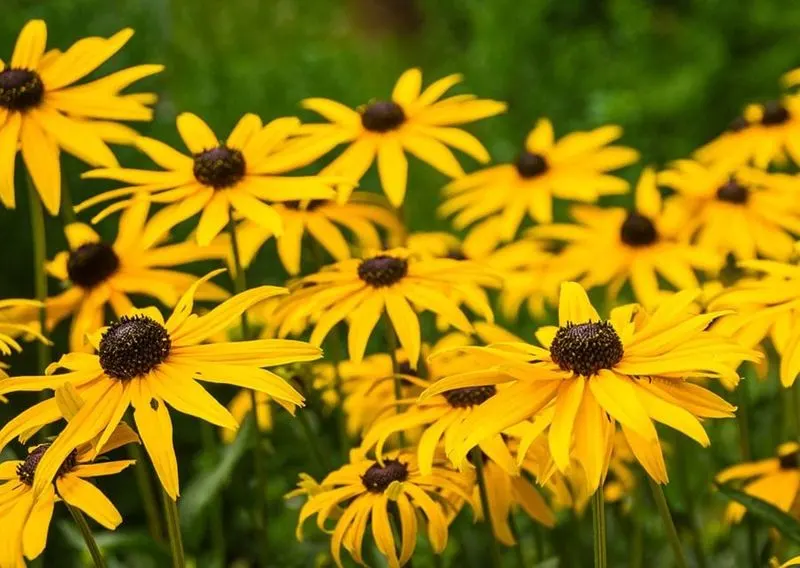
Black-eyed Susans are iconic wildflowers that add a splash of sunshine to any garden. With their bright yellow petals and dark centers, they are a favorite among pollinators. These perennials thrive in full sun and require minimal care, never needing division.
Black-eyed Susans symbolize encouragement and motivation, often seen in fields and gardens across the country. Their ability to attract butterflies and bees makes them an eco-friendly choice. Robust and cheerful, they provide lasting color from midsummer to fall, enlivening outdoor spaces effortlessly.
Lavender
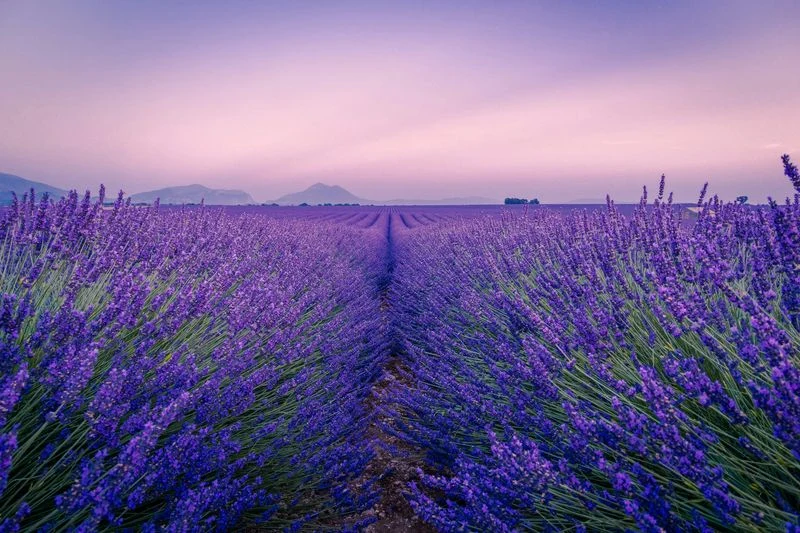
Lavender’s soothing scent and purple blooms have made it a garden favorite. Known for its aromatic foliage and delicate flowers, lavender requires little maintenance and no division, thriving in sunny, well-drained locations.
This perennial is perfect for creating fragrant borders and attracting pollinators. Lavender has a rich history in aromatherapy and culinary uses, adding to its appeal. Its calming presence and versatile nature make it ideal for gardens seeking tranquility and elegance. Whether in pots or the ground, lavender remains a timeless classic.
Russian Sage
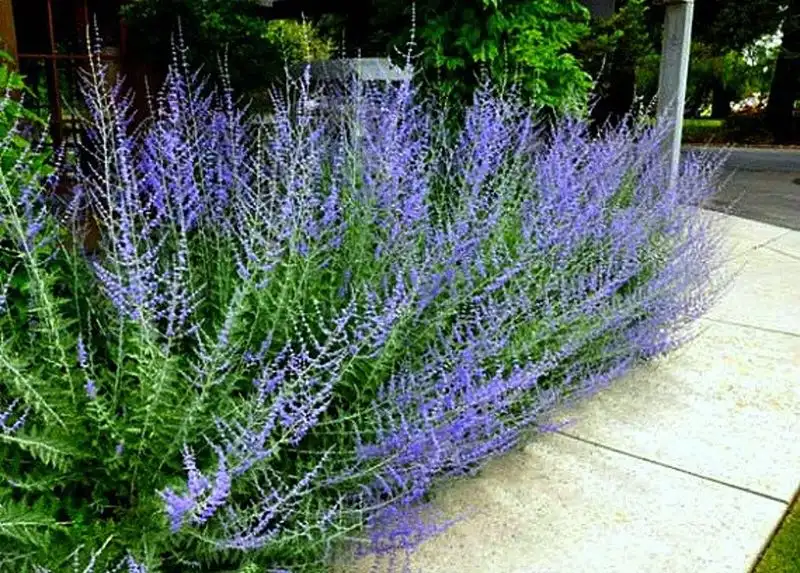
Russian Sage is admired for its wispy, silver-gray foliage and delicate purple flowers. It thrives in full sun and well-drained soil, requiring no division. This hardy perennial is drought-tolerant, making it suitable for xeriscaping.
Russian Sage adds a soft, airy texture to gardens and is often used in borders and mass plantings. Its ability to withstand harsh conditions while maintaining its beauty makes it a gardener’s favorite. The gentle sway of its flower spikes in the breeze creates a serene atmosphere, enhancing any landscape.
Catmint
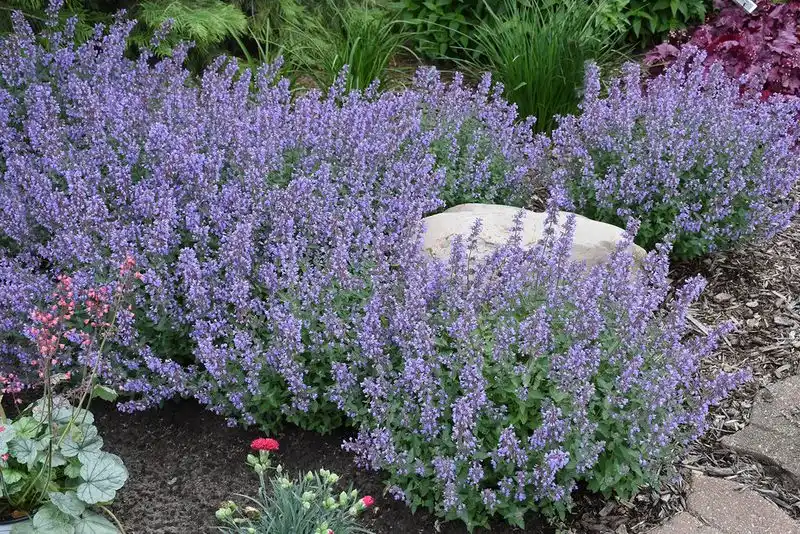
Catmint is a resilient perennial loved for its aromatic foliage and lavender-blue flowers. It blooms profusely in sunny locations and requires minimal care, needing no division. Catmint’s long flowering period and ability to attract pollinators make it a valuable addition to any garden.
This plant is drought-tolerant and can thrive in poor soil, providing beauty with ease. Catmint’s soothing scent and charming appearance make it a favorite for cottage gardens and borders. Its ease of growth and maintenance appeals to gardeners seeking both form and function.
Coreopsis
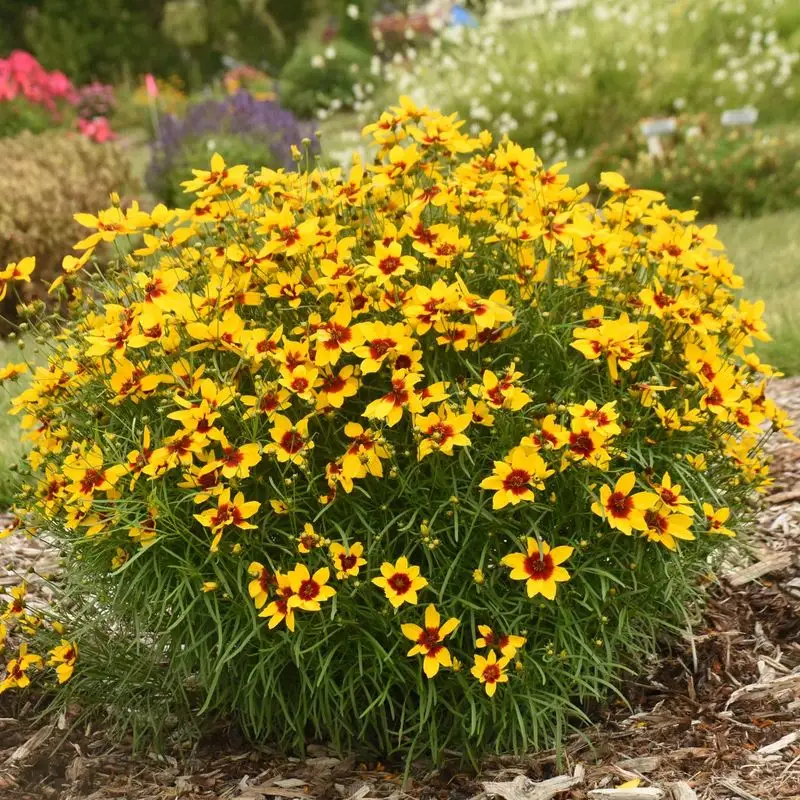
Coreopsis, often called “tickseed,” is celebrated for its bright, daisy-like flowers that bloom through summer. These perennials thrive in full sun and require little care, making them ideal for low-maintenance landscapes.
Coreopsis attracts pollinators and provides lasting color, enhancing gardens with minimal effort. Their ability to grow in various soil conditions adds to their appeal. Known for their cheerful blooms, they symbolize cheer and joy, spreading happiness in gardens and natural landscapes alike. Coreopsis stands as a testament to effortless beauty.
Butterfly Weed
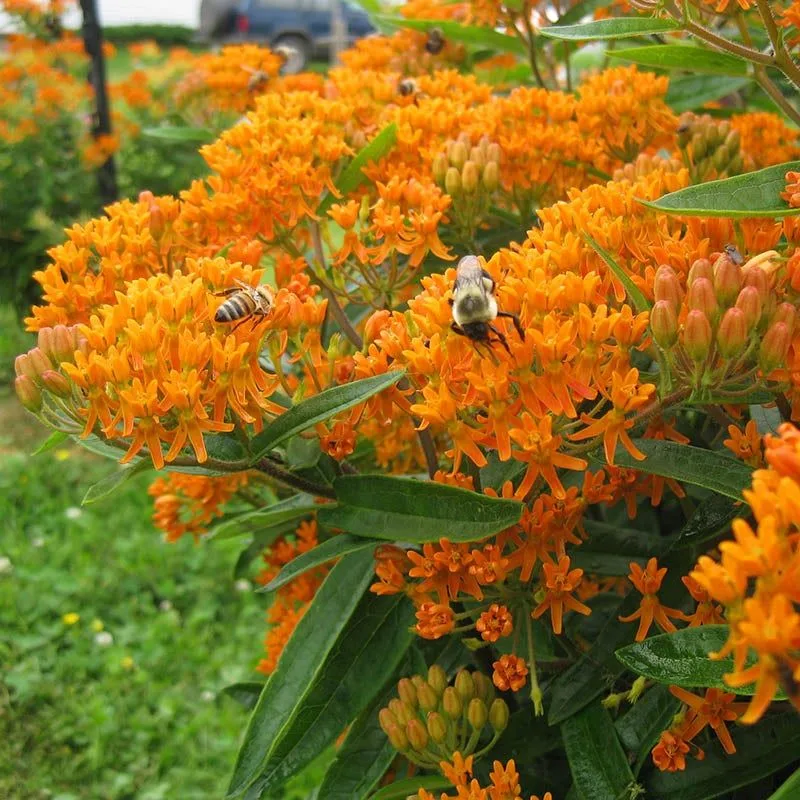
Butterfly Weed is a vibrant perennial known for attracting monarch butterflies with its bright orange blooms. It thrives in sunny locations and requires minimal care, never needing division.
This plant is drought-tolerant and adapts well to various soil types, making it a resilient choice for gardeners. Butterfly Weed’s ability to support pollinators and its striking appearance add to its appeal. As a native plant, it plays a crucial role in supporting local ecosystems, offering beauty and ecological benefits in equal measure.

